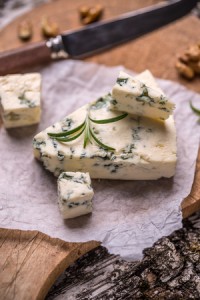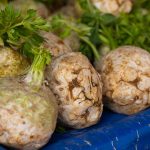Blue cheeses are a must for the cheeseboard and there is nothing more iconic than Stilton. G.K. Chesterton, the British philosopher and poet, and cheese fancier famously declaimed “Stilton….England has need of thee, and so have I.” I’m often looking for a wheel of this particular cheese.

The origins of this particular cheese are due in part to its manufacture in the later Spring months, especially between April and June. Milk traditionally meant for calves was abundant, almost to excess and needed to be stored as cheese. The maturation process in some counties led to Stilton which was then made available around Christmas.
Stilton is much drier and less crumblier than other blue cheeses of its type. As it matures, it becomes more creamy which lends itself well to spreading, developing a striking nutty, tangy note.
It has PDO status, acquired in 1996, which means a European Protected Designation of Origin which prevents its production and naming outside just three counties in Britain. Leicestershire, Derbyshire and Nottinghamshire (the East Midlands) are the only areas where it is produced.
It is ideal served with pears and makes a wonderful addition to pies and the base of biscuits, lending its distinctive bite.
Suppliers Of Stilton:
Try the Stilton from the Cropwell Bishop Creamery, established in the Vale of Belvoir which has been owned by the Skailes family for coming up to three generations. They are encouraging the return of traditional cheese making techniques which were abandoned when mechanisation began to raise its head. The curd is handled with great care to produce a silky textured cheese. The creamer will produce up to 20,000 wheels of stilton in just three months. This requires 74 litres of fresh, local milk to make a single wheel which is an extraordinary amount but worth it for this king of cheeses.
Please note this page contains links to our affiliate marketing partner. Please read the affiliate disclosure.


Leave a Reply